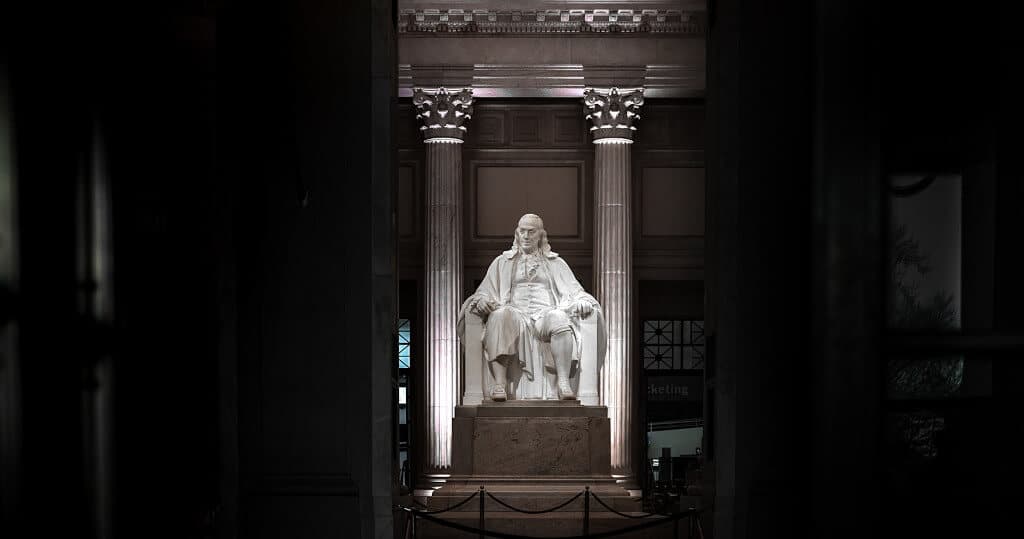The Congress of the United States seems as though it has been the leading body overseeing the nation since time immemorial. However, it only came into existence following the creation of the United States Constitution.
Before that, a series of governing bodies formed to shape history from the days of the American Revolution until full independence.
The Continental Congress was responsible for many major decisions and documents between 1774 and 1781. What was the Continental Congress responsible for, and why do American history books discuss the First and Second Continental Congress?
What was the Continental Congress?
Simply put, the Continental Congress was a meeting between delegates of the thirteen colonies in response to growing tensions with Great Britain. However, there were two separate congresses between September 1774 and March 1781.
The first disbanded to allow a response to an ultimatum following the Intolerable Acts, and the second helped steer the nation through the Revolutionary War and Declaration of Independence.
The First Continental Congress
The First Continental Congress came about in 1774 following the passing of the Intolerable Acts. Also known as the Coercive Acts, these laws placed increasing restrictions on the people of Massachusetts and later the rest of the colonies.

Growing tensions in the American colonies at this time led to the desire to bring delegates together to discuss a democratic and measured response.
Delegates from twelve out of the thirteen colonies across North America came together on September 5th, 1774, for a relatively short-lived Congress. Georgia declined the invitation because of their ties to the British military in its fight against a Native American uprising.
They met at Carpenter’s Hall in Philadelphia, a city that would host many important meetings and decisions in the following years.
Another interesting thing about this meeting is there had been calls for a similar assembly much earlier in the year. Benjamin Franklin, who was influential in the Continental Congress and later acts through the Revolutionary War, saw the need for action before the Intolerable Acts came into force.

However, it would take a little persuasion and the full impact of these laws to get enough people on the side to set up this full Congress.
The Creation of the Continental Association and a Strong Ultimatum
One of the most pivotal moments in this short Congress was the creation of the Continental Association. Also known as the Articles of Association, this document played a major role in accentuating the colonies’ position of power.
They imposed an immediate ban on British tea and proposed a further prohibition on goods from Great Britain, Ireland, and the British West Indies, as of December 1st, 1774.

On top of this, Congress put forward a more significant ultimatum to the British. There was the threat to ban exports to those regions from September 10th, 1775, if Britain didn’t repeal the Intolerable Acts.
Furthermore, they declared that the Continental Congress would reconvene on May 10th, 1775, if they didn’t get their way.
With all of this laid out and agreed to, there was a clear sense of unity where the nation could stand up to its rulers as one.
The First Continental Congress then disbanded on October 26th, 1774, with its business concluded for the time being. But it wasn’t long until they met again, and a new congress fought harder against British rule.
The Second Continental Congress
Those responsible for the ultimatum to the British at the First Continental Congress were true to their word. As there had been no positive progress on the matters mentioned, they reconvened on the agreed date of May 10th, 1775.
Again, the delegates from the American colonies met in Philadelphia, although it was at Independence Hall this time.

There was a new sense of urgency for a better resolution for the nation as America was now caught up in the Revolutionary War. The relationship with the British was so bad that delegates were torn between the need to break free from tyrannical rule and keeping the advantages of British governance.
This dilemma is why we see examples of delegates advocating for peace while aiding those fighting the war.
Building an Army While Offering an Olive Branch
A good example of the Second Continental Congress’s two sides is the way they bolstered their army while seeking a peaceful resolution from King George III.

On June 14th, 1775, America appointed George Washington as the leader of the new Continental Army. This army was a growing military resource, including thousands of militiamen from Massachusetts and New York.
While Washington continued to lead this military unit and work on holding back the British for an American victory, the Second Continental Congress also worked on advocating for peace.
They adopted John Dickinson’s Olive Branch Petition on July 5th, 1775, in the hopes of persuading King George III to end the war.
The aim was to bypass the British parliament and speak directly to the monarch for a speedy resolution. The problem was that directly addressing the King was pointless as he simply refused to read it.

Get Smarter on US News, History, and the Constitution
Join the thousands of fellow patriots who rely on our 5-minute newsletter to stay informed on the key events and trends that shaped our nation's past and continue to shape its present.

The Desire for Independence
The complete failure of the Olive Branch Petition and the developments of the Revolutionary War saw a shift in the overall consensus of the Second Continental Congress.
There was now a strong desire for America to become a fully independent nation and to break away from British rule entirely. This aspiration led to the drafting of the Declaration of Independence in July 1776.

The Second Continental Congress remained in place as a governing body until the Congress of the Confederation in March 1781. This institution would then become the Congress of the United States following the passing of the Constitution in 1789.
The Importance of Both Continental Congresses
Whether we look at the Continental Congress as one body with a hiatus or as two separate entities, it is clear that it was essential for getting America through the war.
This Congress helped provide a greater sense of unity and power to help America stand up to the British following the Coercive Acts and made independence and the United States Constitution possible.




